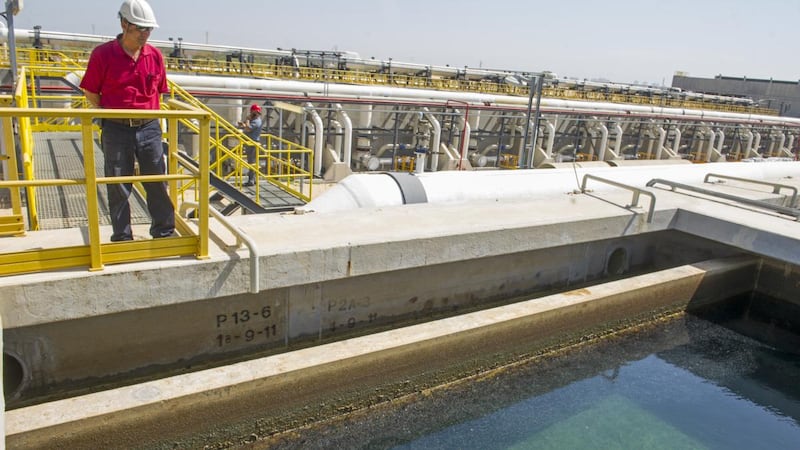Water scarcity, heightened by periods of prolonged drought, fuels tensions across the Middle East.
Access to water is a major concern throughout the region, where arid conditions combine with population growth and poor infrastructure to make water the Middle East’s most precious asset, periodically sparking internal unrest and conflicts between countries.
But Israel has emerged as a world leader in water technology after solving its own acute water crisis.
Just a few years ago, in the middle of its worst drought in 100 years, Israel’s water reserves were approaching the red line. Now it has a surplus.
The country’s water revolution was accomplished through a combination of a national campaign to conserve and reuse dwindling water resources and a new wave of state-of-the art desalination plants.
In 2007, low-flow toilets and showerheads were installed nationwide and the national water authority built innovative water treatment systems that recapture 86 per cent of the water that goes down the drain for irrigation use.
Hard-hitting television ads featuring well-known personalities hammered home the message “Israel is drying up” as the skin on actors began to crack up.
Water conservation became fashionable and parents urged their kids to take quick showers, saying the Kinneret, the Sea of Galilee, Israel’s main source of fresh water, was “running out of water”.
Domestic water consumption fell by 18 per cent after the campaign but that was not enough.
Brackish water
The next big decision was to reduce the amount of water used by Israel’s farmers. Israel was already a leader in drip irrigation technology and, to reduce the amount of fresh water used for agriculture, the cost of water for farmers was increased, forcing farmers to turn increasingly to brackish water.
About one-third of irrigation water in Israel now originates from wastewater treated at more than 150 plants.
The major breakthrough came with desalination, the process of removing salt from seawater.
Desalination works by pushing saltwater into membranes containing microscopic pores. The water gets through, while the larger salt molecules are left behind.
Israel’s first desalination plant was built in Ashkelon in 2005.
Today, up to 80 per cent of water for domestic use flows from large coastal desalination plants in Sorek, Ashkelon, Ashdod, Palmachim and Hadera and more are under construction, including Sorek B, planned to be the world's largest, with a capacity of 200 million cubic metres of water a year.

By 2025, Israel aims to be producing 1.1 billion cubic metres of desalinated water annually.
"Desalination has created a new and reliable source of water, and reduces dependency on the amount of rainwater," Hila Gil, director of the desalination division in the Water Authority, told the Ha'aretz newspaper. "It allows us to allocate water for farmers for a much longer period, and also for rehabilitating natural parks."
Sea of Galilee
Desalination used to be a very expensive endeavour but, by incorporating advanced technologies, Israel has brought the price of desalinated water down to just a third of what it cost in the 1990s.
The increasing use of desalinated water enabled Israel to stop pumping water from the Sea of Galilee – actually a lake – in the north to Israel’s more arid regions in the south, preventing the level of the lake from falling further, even though it remains significantly below the optimal level.
Tackling leakage is also a crucial element in water conservation. Israel’s 7-8 per cent leakage rate is the lowest in the world, compared to up to 30 per cent in many other countries.
However, the push towards desalination has created a number of health and environmental challenges.
One issue is the cumulative effect of large quantities of salt being dumped back into the sea as a byproduct of the desalination, along with chemicals used in the process.
Health experts also note the lack of some key minerals found in regular water, particularly magnesium, potentially increasing the risk of heart disease.
There is also the question of the high-energy consumption of desalination plants. Each plant has a different energy source and some have their own power stations.










